One of the first things that I added to my list when I started researching New Zealand is that I wanted to hike one of the Great Walks. New Zealand has 10 ” Great Walks” that are located all over the country and range in distance, difficulty of terrain, and campsite options. I think whoever did the marketing on the walks is brilliant because the idea of slowly working your way through all of the great walks is definitely alluring to someone like me who loves trekking. So I’m sure I’ll have to come back again some day to hike more of them.
Seth’s not quite as intense about trekking as me, but he agreed to do one of the great walks and left it to me to pick which one. Milford Sound and Fiordland National Park seem to be the most amped up and scenic places in New Zealand, and with 3 of the 10 great walks being located in the park, I knew it had to be one of those. I was really torn because I thought the Keplar Track looked just as awesome, but the Milford Track is really the most renowned of all the tracks and is often called the “greatest walk in the world”. So the marketing definitely got me on that one and I became enamoured with the idea of doing that walk specifically.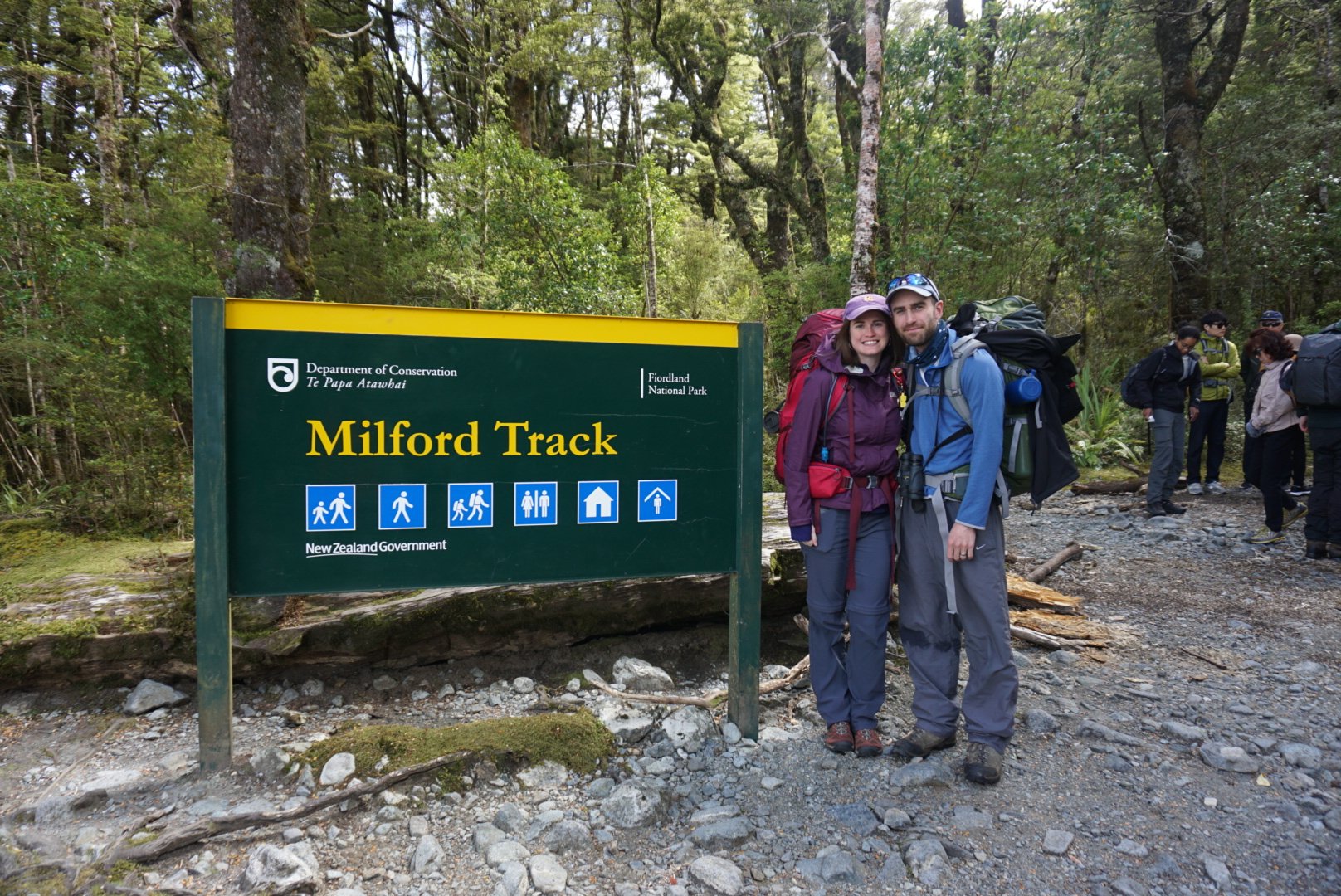
I shared some history about the track in my last post, so I’ll try not to repeat myself about the historical significance of the track and just encourage you to read that post instead. It’s a 53.5km long track and because of the temperamental nature of the weather in the park (and the inordinate amounts of rain), there are no tenting options and everyone is required to stay in the same 3 huts consecutively while completing the trail. Overall it takes 4 days and 3 nights and requires a boat to access both of the trailheads. The huts have a capacity ofn40 people, so only 40 independent hikers are permitted on the trail per day. Some people also visit the trail by doing a day hike to the first hut and back, or you can also do a guided hike, which stays in different huts and is for the most part totally separate from the independent hikers. But it’s a lot more expensive because the guider hikers also stay in mountain hotels and have all their meals catered. So a nice option if you’re not a trekker and you have some extra cash lying around, but we definitely preferred the independent option.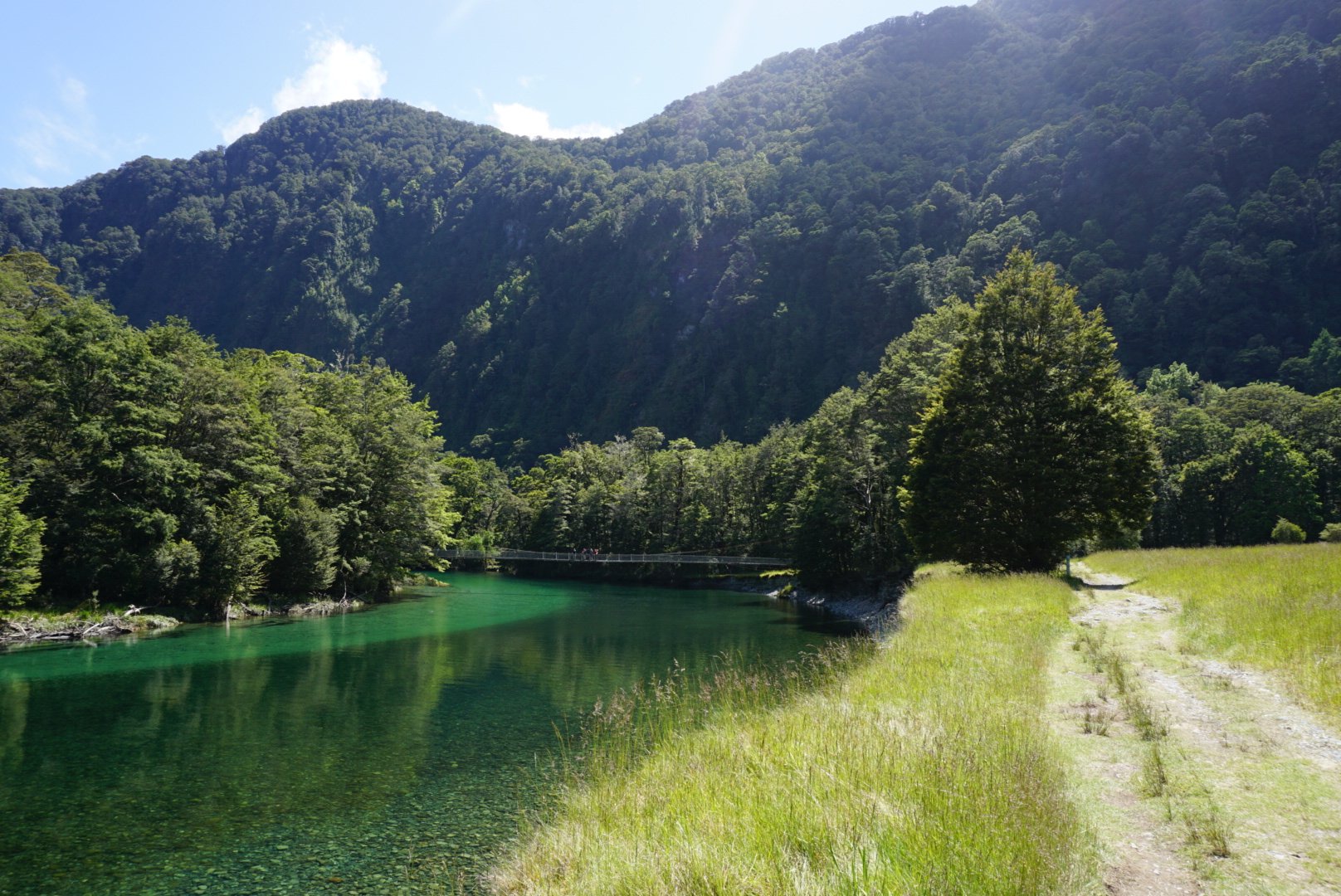
Like BC, trekking and camping are super popular here amongst both the locals and the foreign visitors, so scoring a hut pass is no easy feat. Fortunately after 6 years of living and camping in BC, I’m an expert at booking campsites. Similar to BC, there are specific days when they release the bookings, so all the way back in June of 2019 I had a reminder in my calendar to make a booking as soon as they released. I was ready with my preferred dates and made the booking right away. It took me about 3 minutes to secure a spot in the huts and by the time I refreshed after completing the reservation, the track was almost completely sold out for the entire season! So it is an insanely popular hike and I do feel very privileged that we got to participate in the experience, especially as visitors. Although you do pay a steep price as foreigners and pay double what the locals pay for a bunk. No complaints that they do it this way, but there’s also no sugarcoating that the Department of Conservation (DOC) charges a hefty price for the hike. Our hut bunks were actually the most expensive accommodation we stayed in throughout the entire 5 weeks of the trip.
But fortunately it was an awesome experience and I dont have any regrets. We had mixed weather on the hike, but the scenery was quite beautiful. I dont really buy that it’s the “greatest walk in the world” and I think any of the other great walks would have been just as scenic (and that I’ve done hikes that were just as scenic or more in BC too). But what I unexpectedly really enjoyed about the hike was the people. Because you have to stay in the 3 huts, all 40 independent hikers are doing the exact same thing for 4 days. This isnt the case for most of the other tracks, which have a combination of hut and tenting sites where you can kind of build your own adventure. But on the Milford Track, you’re all in it together. Couple that with the fact that we did the hike over Christmas, from Dec 24-27, I felt that we really built some nice relationships with the other hikers. Everyone on the track was super friendly and the full time rangers at each hut love to share all their knowledge with you. It really made for a warm and memorable experience.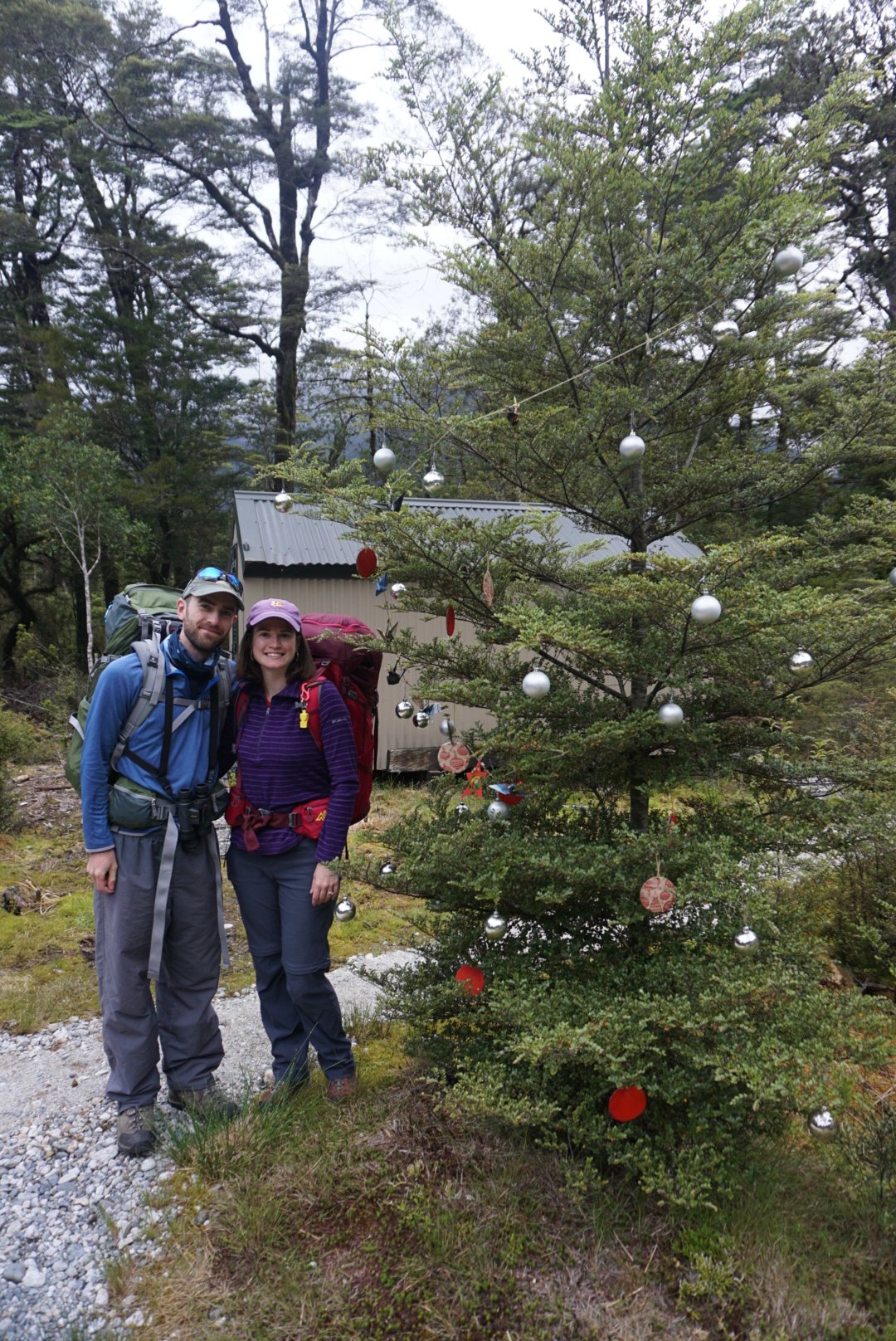
So far as the trekking went, it’s one of the easier backpacking trips I’ve done. I’ve noticed that New Zealanders seem to have a bit of a penchant for hiking through the valleys and most of the hike is flat along the valley floor, except when you climb over the MacKinnon Pass on the 3rd day. This makes total sense from a historical perspective on the Milford Track since the whole point of the track was to find an easier overland route to the Sound. But to someone who’s used to hiking up BC mountains all day, it was a much easier hike. The distances were longer than I usually backpack, but the huts included mattresses and gas stoves, so without a thermarest or tent, our packs were definitely a lot lighter than I’m used to (which was lovely).
The first day is an easy one, you take an hour boat ride to the trailhead and then hike about 5km along the Clinton River to Clinton Hut. This was our best weather day on the track – it was a gorgeous, sunny, blue sky day – so we took our time and really enjoyed the beautiful river views. There’s a short wetland walk near the hut and we had lunch along the river. Since it was a beautiful hot day, I couldn’t resist going in the river. It was absolutely freezing cold, like the kind of cold that numbs your feet immediately and makes it hard to walk, but refreshing on the muscles.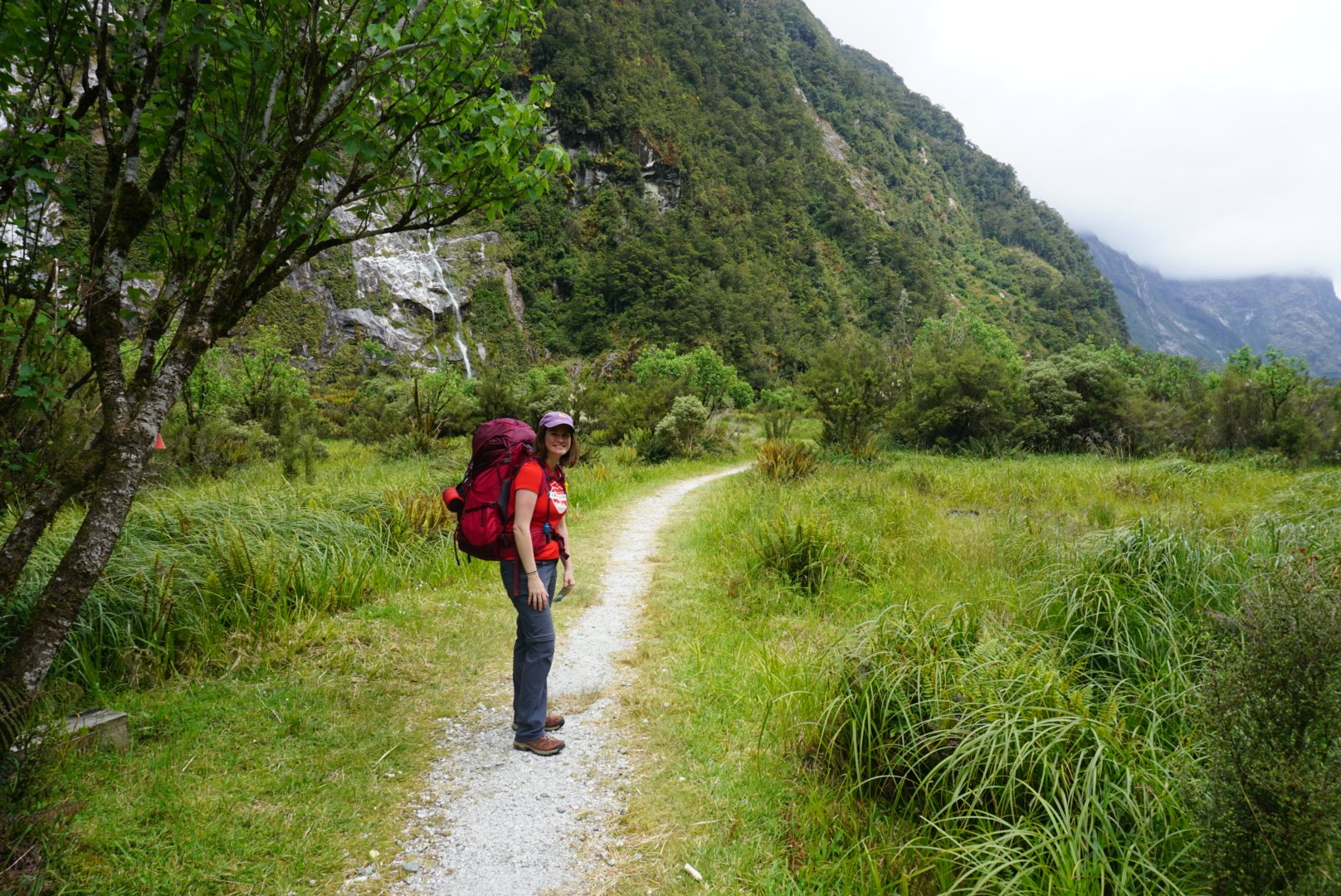
Like I said, each hut has a full time ranger and the ranger at Clinton Hut took us on a little nature walk to teach us about some of the plants and animals in the area, as well as some of the work DOC is doing to protect the native wildlife in the area. I’ve talked in my other blogs about some of their efforts to create predator free spaces in New Zealand for native and endangered birdlife. Because NZ was historically just an island full of birds, protecting the birdlife is the number 1 priority.
I’ve never travelled to a country that is as enthusiastic about conservation as New Zealand. That enthusiasm extends to a savage desire to kill every introduced predator that threatens the lives of their endangered birdlife, which includes rats, ferrets, weasels, and undesirable no.1, the stoat. The stoat is particularly hated because it robs nests and kills birds, but not just to eat, but also just for fun, leaving piles of bird carcasses in its wake. The stoat threatens a lot of the bird life, particularly flightless birds like the kiwi, and of high importance on the track, the blue duck (or whio as it’s known by the Maori).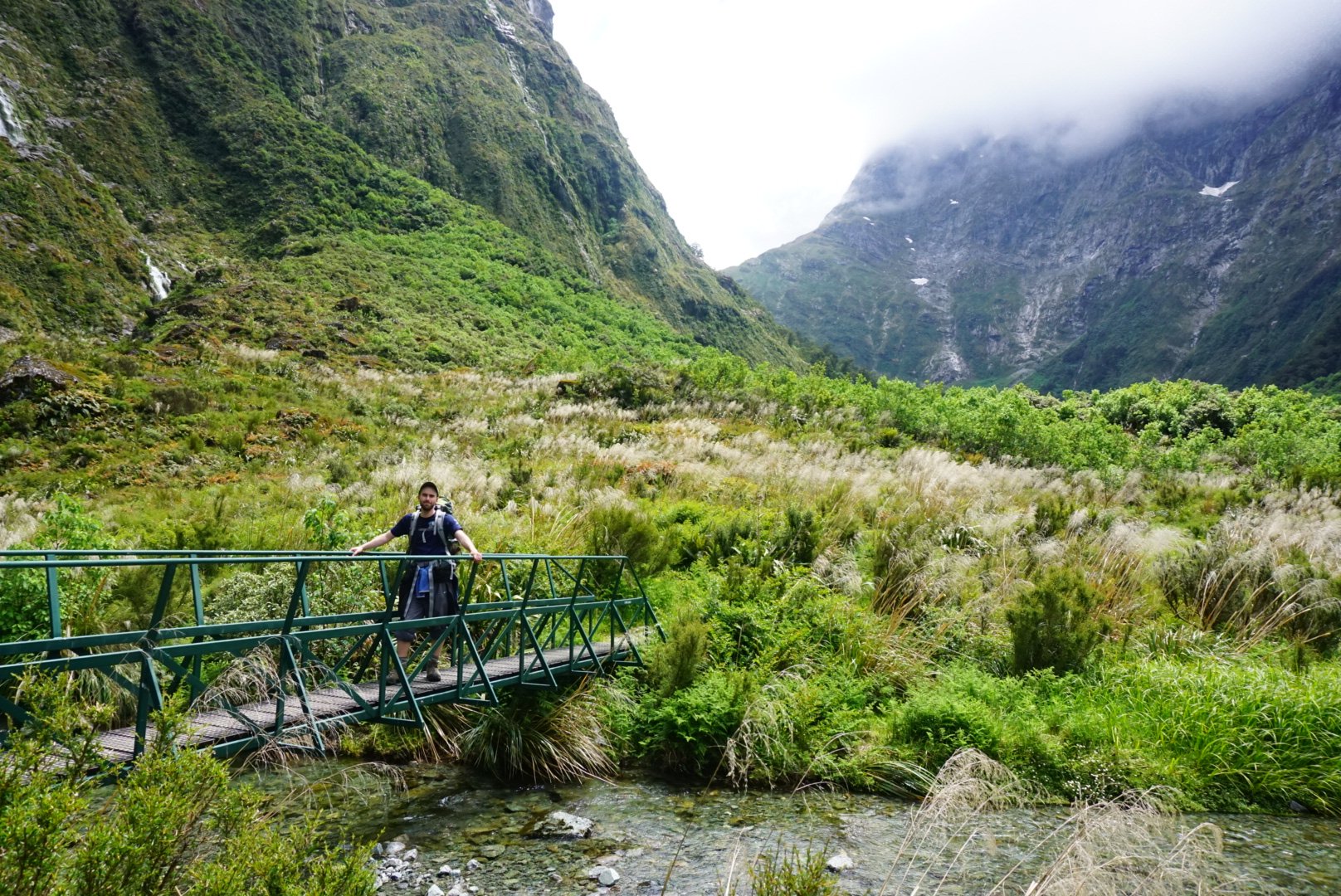
The Whio is an alpine duck that likes to hang out in white water rapids but has become very endangered. In an effort to increase their numbers, DOC has a number of different killing campaigns (my word choice, not theirs). I do totally support their efforts to wipe out the invasive predators, but they’re also pretty creative in their bloodlust to eliminate them. The most common trap we saw was a wooden spring trap, which are placed all over the trails in the woods. It has bait inside and a giant mouse trap to quickly and effectively kill the prey. But DOC regrets the maintenance of these traps as they can only kill up to 2 animals per trap and have to be checked and reset once a month, requiring a lot of people power. They also have more efficient killing machines, their A12s and A24s, which are essentially little guns that are attached to trees and shoot a bolt through the heads of the predators that set them off. As their name suggests, they can kill up to 12 or 24 predators before needing to be reset.
The last method (I learned about anyways) is by far the least popular, but sometimes used if they see an invasion of something like rats on a previously predator free island. It’s a poison bait drop where they essentially drop a ton of 1080 poison pills on entire areas, which the predators will then eat. It’s not popular because it’s a much crueler way to kill the predators (takes longer to die), some ground birds will also eat them and die, and the uneaten pellets are basically left all over the park. It’s pretty common actually to see warnings about them to not let children or pets ingest if you stumble upon the pellets.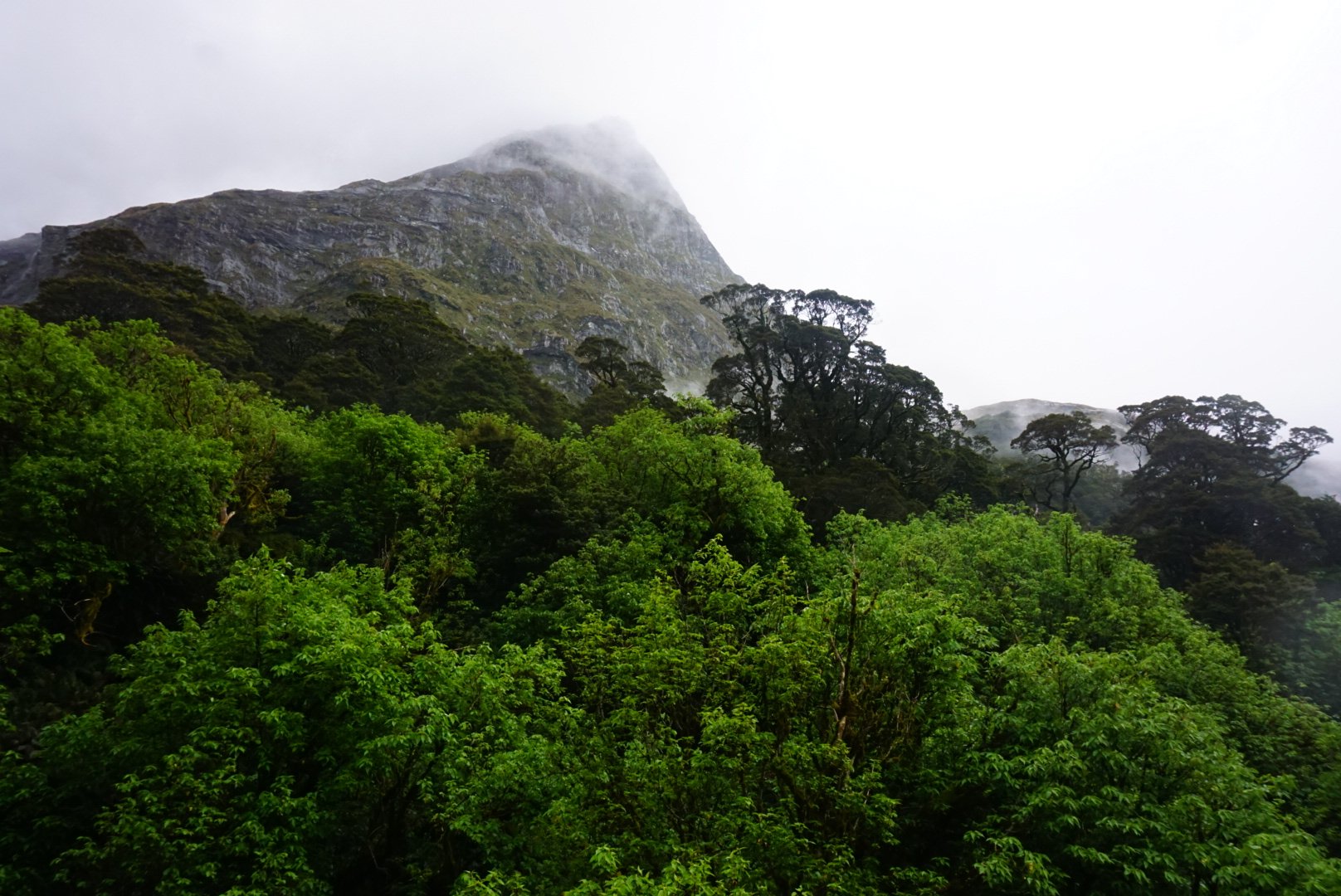
So there you go, a long graphic description of all of DOCs killing methods as ferverrantly explained to us by our ranger at the Clinton Hut. So many New Zealanders espouse these ideas though and they’ve been explained to us so many times by conservationists that we do wholly support them, as barbaric as it might sound to the outsider. And they have had benefits. They caught something like 600 stoats the first year they placed the wooden bait traps in the park and the whio numbers have seen a dramatic boost, with more ducklings counted along the park rivers then ever before.
But we experienced a lot more on the trail then just predator control. Before we’d even heard about the whio success story Seth had decided that the blue duck was what he really wanted to see on the trail. So of course, despite the claims of all the whio, we didnt see any on our first two days. While day 1 was a short day on the track, we paid for it on days 2, 3, and 4. We hiked 16.5km on day 2, which was also Christmas Day! It was a much different Christmas than we’re used to, but we did get to help the ranger decorate one of the trees by the hut for the occasion. Christmas Day was also mostly in the valley, though we had much more dramatic peaks rising on both sides of us. It was an overcast day and the very tops of the mountains were lost in the clouds, but it didnt rain and overall it was pretty good weather for hiking. I decided to make a tradition of my river swim and went for another dip in the river when we made it to Mintaro Hut.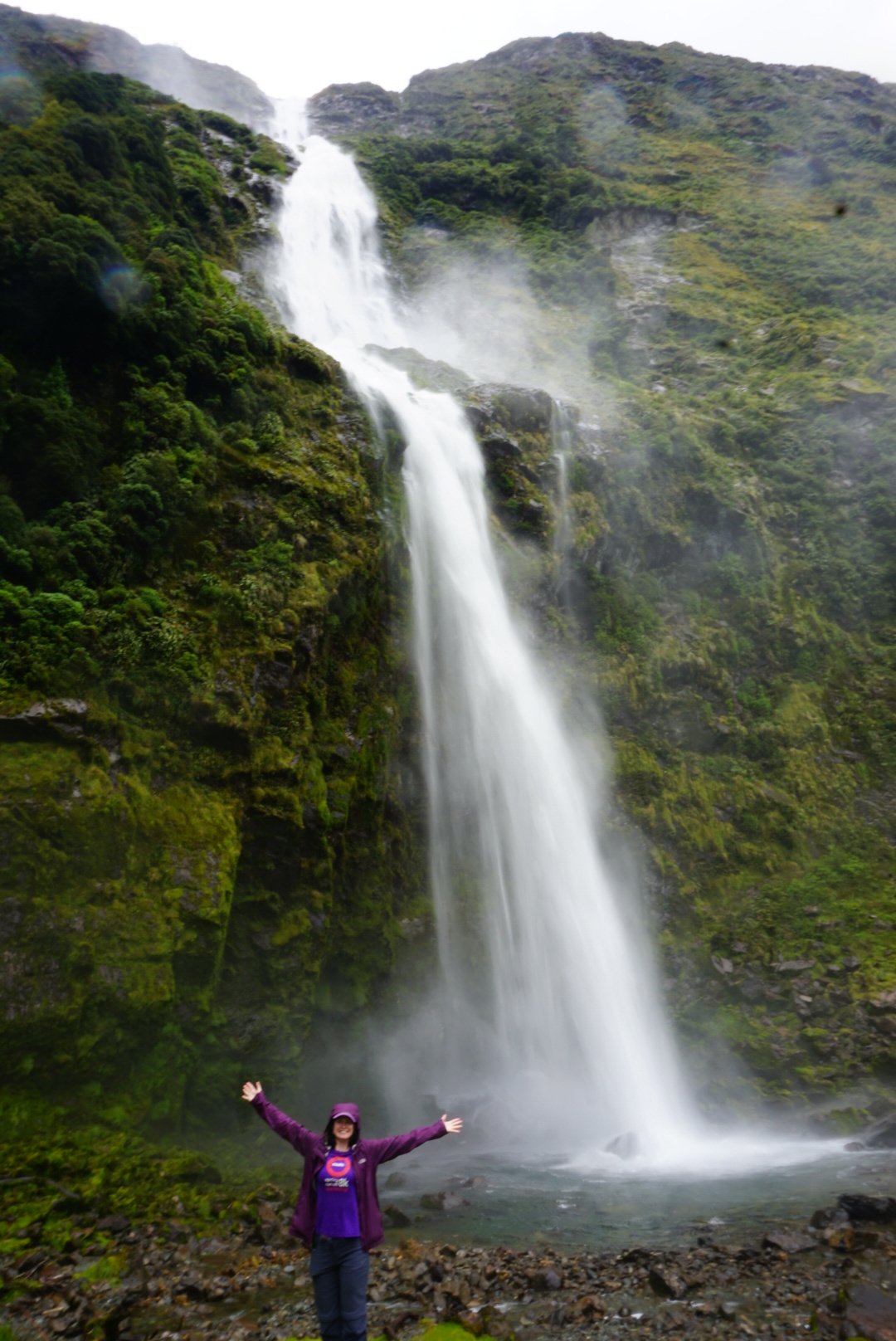
Mintaro Hut is almost halfway along the track and is located right at the base of the MacKinnon Pass. As such, it’s the most remote of the 3 huts and definitely the coldest. I was super warm at Clinton Hut because I’m used to sleeping in a tent and all my gear is too warm. But I was happy for it at Mintaro. It was probably my favourite of all the huts. The other 2 huts had multiple buildings and separate bunk rooms and cooking huts. Mintaro was just one big hut with the cooking area downstairs and most of the bunks in one bedroom upstairs. The bunk room had lovely ceiling windows that looked up at the steep MacKinnon pass atop us and had a real sleepaway camp type vibe with the one room.
Day 3 was probably the most disappointing part of the trip. Because a lot of the hike is in the valley, I was really looking forward to hiking up and over the pass because I’m a sucker for mountain views. But unfortunately I was to be denied and it was a rough weather start. The pass was pretty clouded in when we started hiking and it started to rain on the way up. Fortunately it wasnt heavy rain and our rain gear kept us nice and dry. We did get some nice views looking back at Mintaro and the valley we had hiked through the day before, but because of the way the wind was blowing the cloud in over the mountain on the other side, we couldn’t see any of the view or the mountains on the other side. So we trudged along the freezing trail and quickly pushed downhill to get out of the wind to the other side.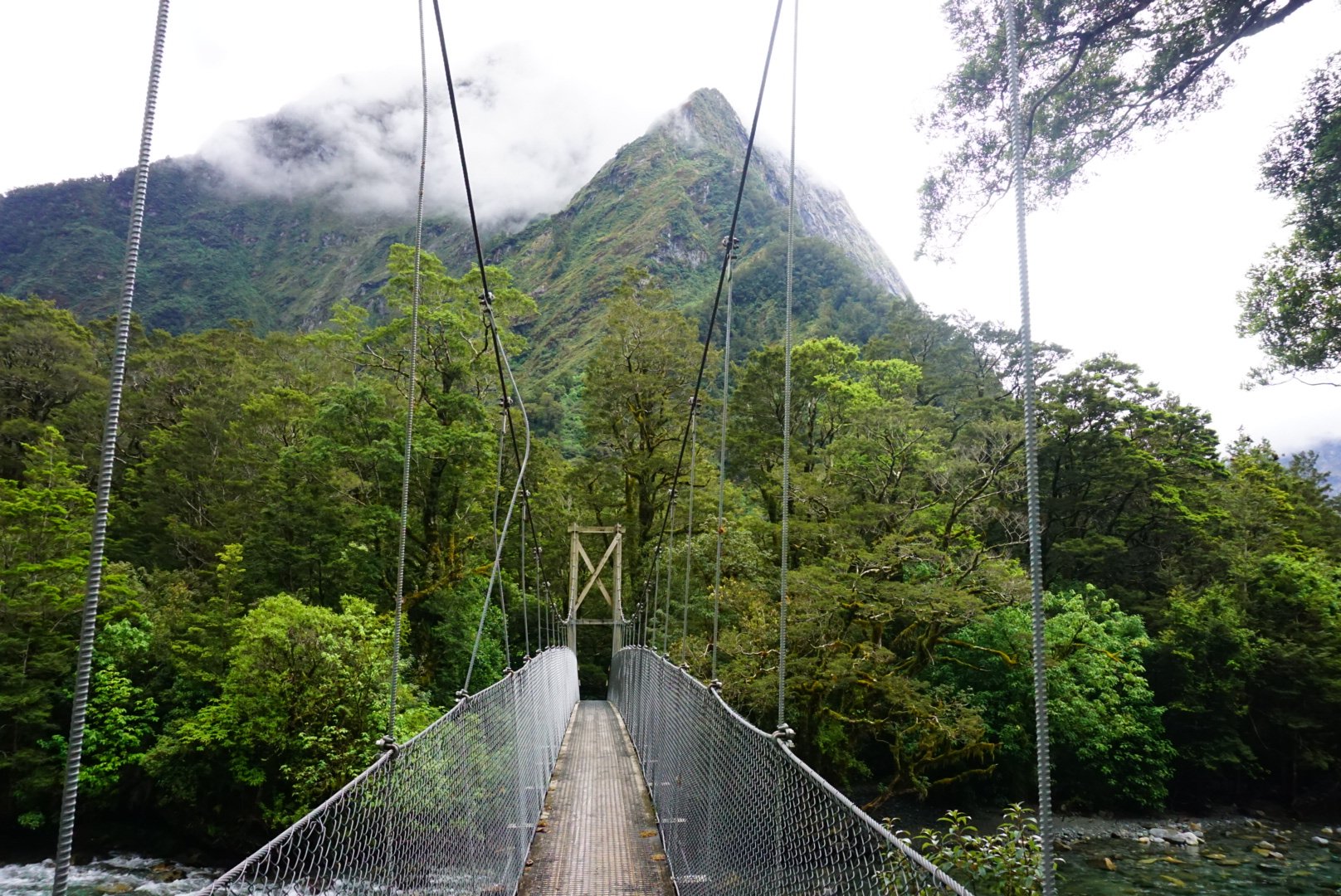
To give you a little more history on the trail. When they were searching for that overland route back in the late 1800’s, an explorer by the name of Donald Sutherland (yup) had created a trail that ran from the Sound to Sutherland Falls, but was unable to find a way to pass over the huge mountain saddle to connect to Lake Te Anau. Enter MacKinnon and Clinton, who pushed a track down along the Clinton River and MacKinnon went on to discover the pass in 1888, which he was then able to connect into Sutherlands Trail.
Of most interest to us in all of this was Sutherland Falls, which at 580m is the tallest waterfall in New Zealand. It cascades down from Quill Lake in the hanging valley above in 3 breathtaking waterfalls. It was a cold and tiring 14km hike up over the pass to our final hut, but almost everyone still did the 4km side trail to Sutherland Falls. It is pretty impressive from up close, mostly just because of the crazy power of the waterfall when it finally hits the ground. The rock floor was definitely taking a beating.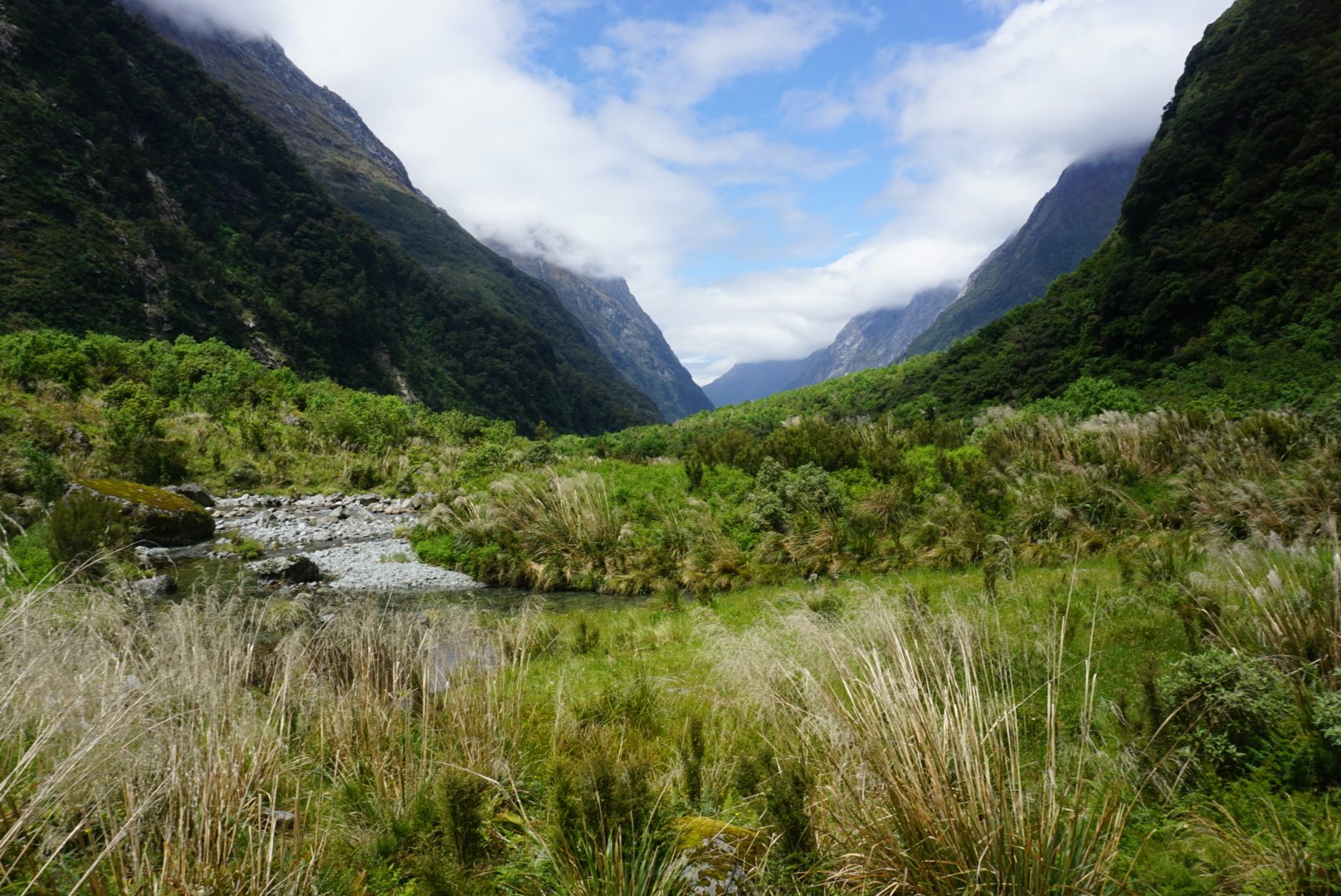
The group had a bit of adventure on the third day when about 30 minutes before the hut, one of the hikers unfortunately fell and hit his head, cutting it open and breaking a tooth. Another hiker patched him up and he was in pretty good spirits (the injured hiker that is), but he still had to be airlifted out so he could get stitches in Queenstown. The ranger at Dumpling hut had a bit of a runaround to secure the heli pad and then we all watched it land from the cooking shelter. Definitely enough adventure for one day.
It was the end of day 3, so by this time Seth was starting to despair about ever seeing his blue duck. I decided to make it a hat trick and swim in the river one last time. I was trying to convince Seth to come down to the river with me, so I lied and said I’d seen a blue duck down there. He didnt believe me of course, but came anyways and what do you know, when we round the corner there’s a blue duck sitting right in the water where I was planning to go swimming! So the curse was broken after that and he saw 2 more whio later that night and another half dozen the next day (including a duckling)!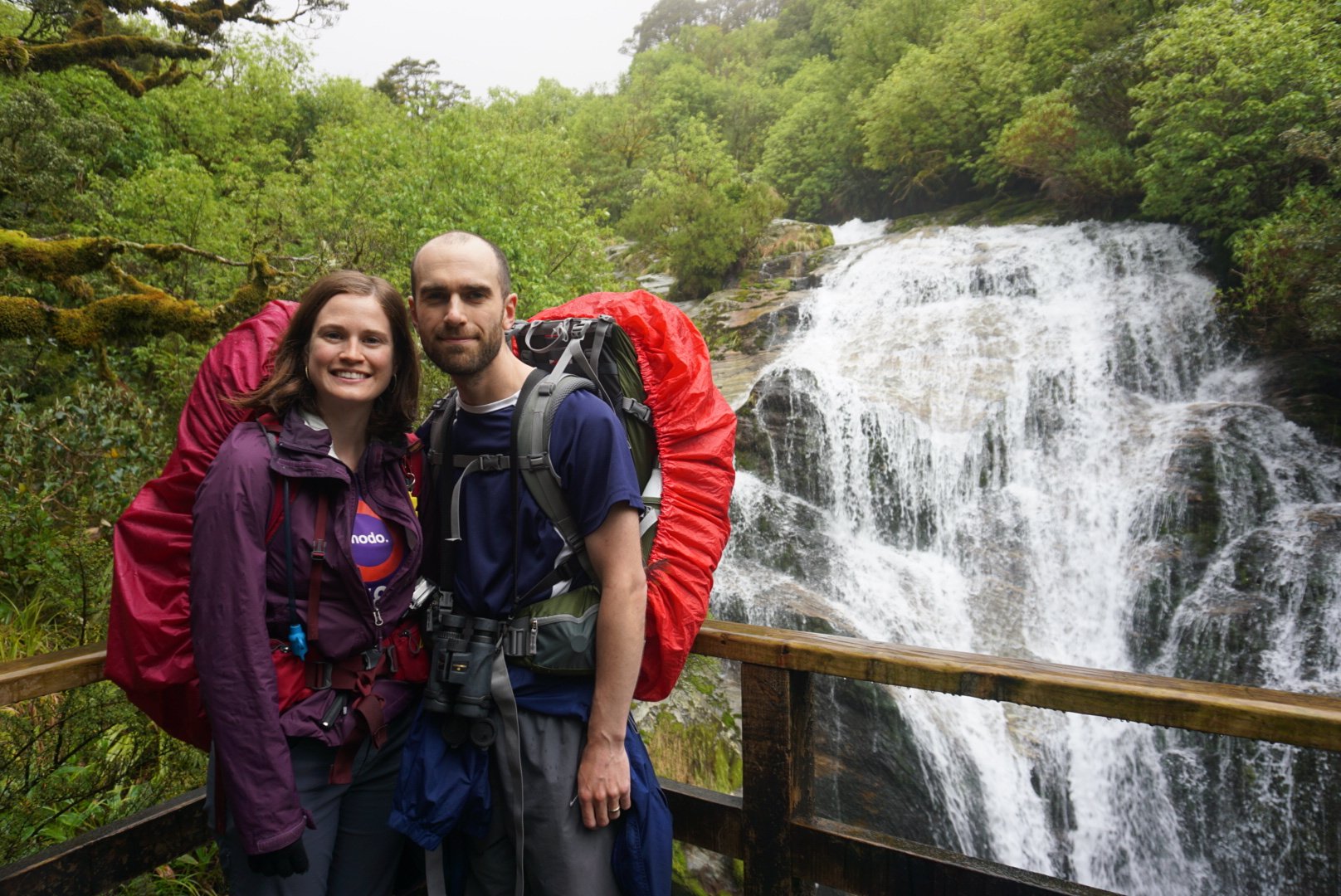
The weather on the last day made us all a bit envious of our fallen comrade’s scenic heli ride out the previous day. It was a classic rainy, wet day on the track. To be honest, we’re lucky it only really rained one of four days based on how much rain the track gets. I do really feel that experiencing the rain was an authentic part of hiking the track and I’m actually kind of glad we got to experience it, but I’m also REALLY glad it was on the last day and I didnt have to worry about how I was going to dry out all that gear.
We had to hike 18km on the last day to Sandfly Point, where we’d be picked up for a short 5 min boat ride to the Sound. It was raining when we started, but again, it was the kind of rain that doesnt really ruin your day. Your rain gear keeps you dry and you can still take pictures. We crossed some cool suspension bridges and saw some nice waterfalls, but the longer we were out, the worse it got. There’s only one shelter between the hut and Sandfly Point and its located about 5km before the end, so we pushed through to that shelter with the intention of eating and changing there. Unfortunately it’s not a great shelter though and the sand flies were awful, so we just shoveled down a few snacks, but on some dry clothes, and decided to push forward to the end. Changing to dry clothes ended up being a waste of time because the rain became totally torrential during the last 5km.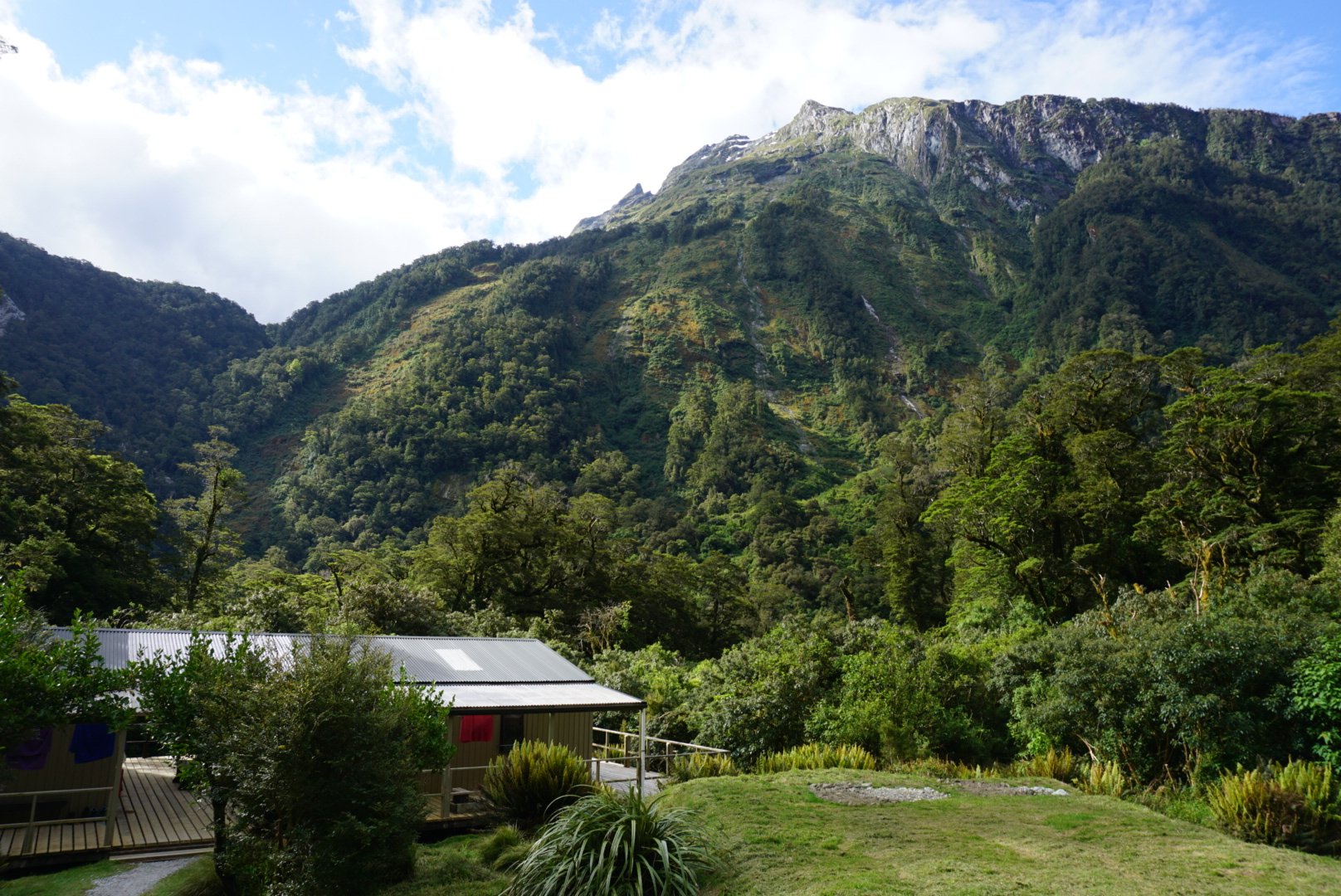
I seriously dont think I’ve ever been so wet in my life – certainly not on a hike. I was soaked to the skin. It was raining so hard it beat right through my rain pants and rain jacket. I was so wet it inspired me to buy merino wool underwear when we got to Queenstown. The trail really is totally transformed in the rain. There’s just nowhere for the water to go. The drainage is horrible and some parts of the track (mostly on the day 2 sections I believe) become flooded up to waist height when the rivers come up. Fortunately we could still tramp through it all, but I gave up on avoiding puddles once my feet were so wet and actually starting taking pleasure in stomping right through the puddles. Once you’re wet enough it doesn’t really matter anymore.
We pounded through the last 5km and arrived at the shelter with lots of time to spare. Unfortunately though, we arrived to a written note saying that the boat was broken and the boat they were using instead was open top and to please keep your wet rain gear on. So there’s no rest (or dry clothes) for the weary (and soaked). But you know what, none of it mattered because we had done it! We traded laughs and congrats with the other hikers and boiled up some hot water for tea while we waited.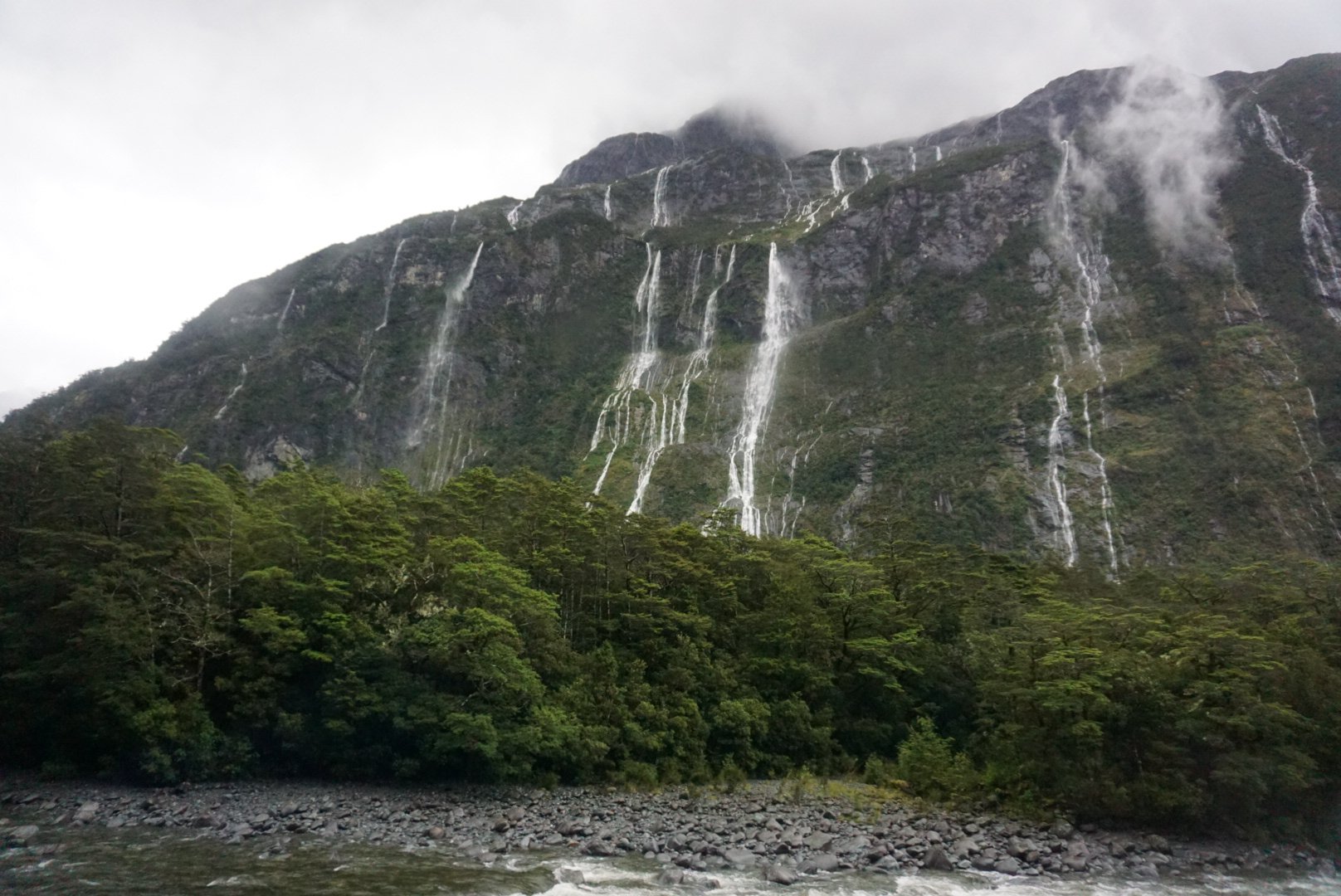
And you know what, we were rewarded! I hinted in my last post that Milford Sound is something to behold when it rains. And I got to experience that too because it was absolutely pouring on our ride out and it was beautiful! Because the mountains are so steep, there’s no drainage for the rain water, so it just cascades down the cliffs in thousands of waterfalls! It was quite literally breathtaking when we stepped out to board the boat and saw the waterfalls all around us. It was like being in Rivendell and honestly just as good a reward for the hike as sun.
And that’s pretty much where our journey ended. We’d already done the Sound so we immediately boarded a bus to take us back to our car in Te Anau and our group became scattered to the wind. It was only 4 days, but I already look back on them with fond memories for both the experiences on the track and the people. There was a huge mix of people on the track from all over the globe, but we all had the opportunity to share this one experience together and I was really uplifted by everyone’s kindness and positive attitudes on the track. A very different Christmas then we’re used to, but definitely one we’ll remember for a long time.
- Reblog
-
Subscribe
Subscribed
Already have a WordPress.com account? Log in now.